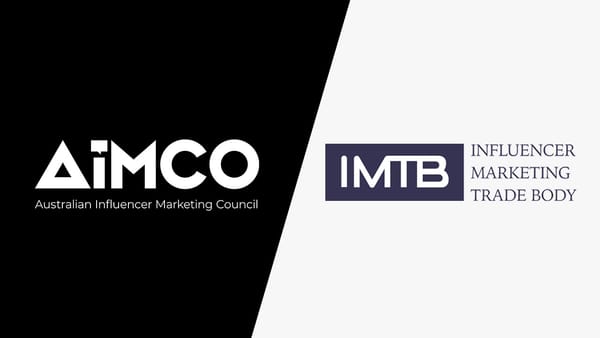The UK’s economy is in flames. Customers aren’t just feeling the pinch of a cost of living crisis but a full-blow Tyson Fury punch. Add in real-term pay and inflation dancing to two very different rhythms, and we marketers find ourselves facing a Q4 headache (and a 2023 that looks no easier.)
Without sounding dramatic, the world has never faced a financial crisis like this before. This recession would be a first for influencer marketing and social media. The last time the UK faced consecutive quarters of no growth, in 2008, dial-up modems were still a thing, and it was totally acceptable (well, sort of) to leave rambling messages on our friends’ Facebook walls. Fast forward to now and 87% of consumers shop online (up by 35% since 2008) and spend over two hours browsing socials daily.
The difference between 2008 and 2022 boils down to this: Customers might be going out and spending less, but they won’t stop scrolling. In fact, the platforms are continuing to grow (by 10.1% in the last year). Users might unfollow brands they can’t afford, but they won’t unfollow the influencers they connect with.
While others pull back their marketing budgets, it’s your time to shine. The IPA showed that when ad spend is cut there’s a direct correlation between losing share of voice and brand awareness. Out of sight, out of mind. However, those that keep plugging away fill the vacuum, with less competition.
Since wallets are being tightly shut and high street footfall is dropping, there’s less value to be found in OOH. At the same time, traditional advertising isn’t having the cut-through it once had – print media is down; digital subscriptions are being cut back; TV watching is in decline since viewers are switching to ad-free streaming, social media and gaming instead.
As every pixel is accountable in digital marketing, rather than slashing the budget, we at SEEN Connects, recommend concentrating on your ROI. Adjust your focus to performance marketing metrics and KPIs that deliver conversion.
The influencer economy is built for this moment. During crunch times, influencers can read the room and connect with audiences without being read as pure advertisement, which can be a switch-off to consumers. But, they also hold those treasured stats that prove their content is cutting through. Influencers have built brands across platforms, know how to surf the algorithmic waves, and are equipped with the skills to ride out a recession.
We’ve found a way to not just survive, but thrive during a recession. It all relies on these six golden rules for picking your influencers…
Use archetypal alignment
An influencer is only as effective as their message is believable. Otherwise, let’s be frank, they won’t influence any purchase. We’ve all seen (and scrolled right past) influencers flogging a brand we know they would never use. When the message is authentic, it lands differently. We use archetypal alignment to ensure our client’s target demographic believe and remember the campaigns. By unpicking the goals and fears of brands, we’re able to match them with influencers and celebrities that are also driven by the same factors.
Read the room
Economists are predicting the cost of heating the home might be too much for middle-income families this winter. If a client wants to make noise at the moment, their tone will be everything. Anything crass or excessive won’t fly – just look at all the furore over @CelebJets.
Influencers know their audience and can communicate with them in a way a brand can’t. For starters, they can do it with a human touch. Those that have a 9-to-5 job on top of their content creation duties will be read as more relatable.
When times are tough, escapism is an important form of entertainment. Working with influencers that can deliver that distraction without seeming unrelatable or insensitive is of the utmost importance. Risk it, and the whole campaign could backfire. We recommend dialling up entry and emerging influencers that can act like Avon ambassadors. They’re localised, approachable and authentic.
Get their digits
The metrics always mean a lot, but right now, when marketing budgets are tighter than a bodycon dress, it’s important to make sure you’re tracking the right stats. To know you’re getting the return that you need, set a clear-cut success metric, then pick your influencer based on how they deliver against that one performance indicator. We recommend watching the following metrics:
For influencers:
- Brand affinity
- Product affinity
- Engagement rate and views/reach per video
- Cost Per Engagement
Hit bullseye
Right now, broad-stroke, awareness campaigns will have to wait. It’s time to drill into the market that will deliver you that bottom line. Be targeted in your approach to audience segmentation. Use every hard fact you have about the consumers you know will convert to reach them where they are.
Working paid integration into your budget will have a two-pronged effect. First, you’ll get your message out there to the most amount of people. And secondly, it will give you a front-row seat on the customer’s behaviour. It will let you know where your target audience is lurking and at what point in their journey compels them to check out
Upcycle your content
Your budget might have been cut back, but I doubt the expectations for your marketing output have been too. When belts are tightened, make the work you do go further. We suggest creating custom contracts for clients, so they are only paying for the content they need. But, say they want to use the influencer’s work on multiple platforms and across owned, earned and paid, you can always dial up the ask.
Go back for seconds
We recommend, recession or not, going back for seconds (and thirds). A long-term commitment with an always-on model provides influencers with an opportunity to deliver consistency, which makes their authentic message more believable. Plus, it has a happy knock-on effect on the CTR, and bottom line and ups brand loyalty while surfing over short-term market fluctuations.








